These colorful foliage perennials will show you how different shades can be added to the surroundings without flowering plants!
When we think of garden color, most of us picture flowers. But many plants have leaves that are just as colorful, and they last much longer than blooms. In this list, you’ll find a variety of easy-to-grow colorful foliage perennials with leaves in shades of red, purple, silver, yellow, and even blue. They’re a great way to keep your garden looking lively across seasons.
Beautiful Colorful Foliage Perennials
1. Coleus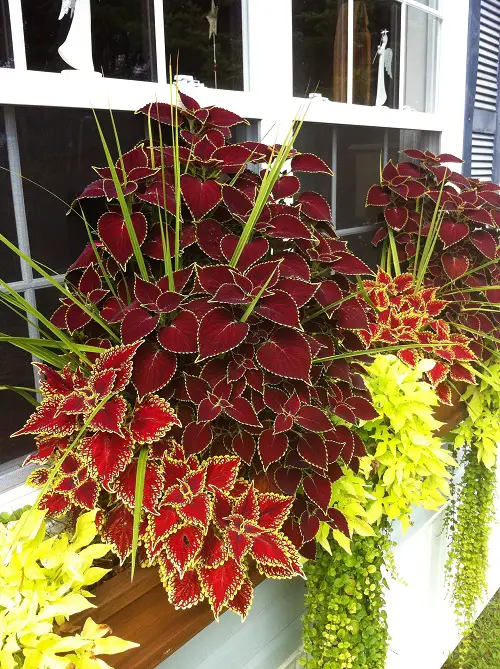
Botanical Name: Plectranthus scutellarioides
USDA Zones: 10-11
If you have a shady space, the coleus plant will light it up with its vivid colors. Coleus comes in an eye-catching array of colors, including purple, red, orange, pink, and yellow, and it grows best in full sun to full shade, too.
2. Hosta
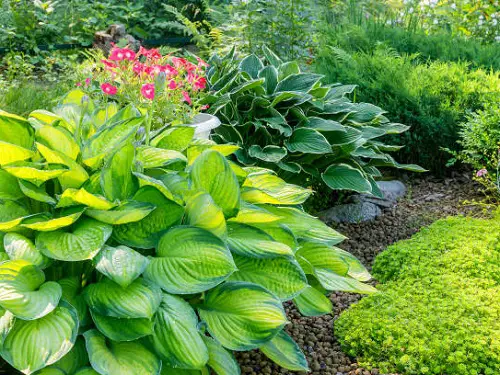
Botanical Name: Hosta spp.
USDA Zones: 3-8
Depending on the variety, hostas come in colors ranging from chartreuse to emerald green. You will love their arching spikes of pink, lavender, or white flowers, adding more summer colors. These plants do well in partial to full shade and in well-drained soil.
3. Coral Bells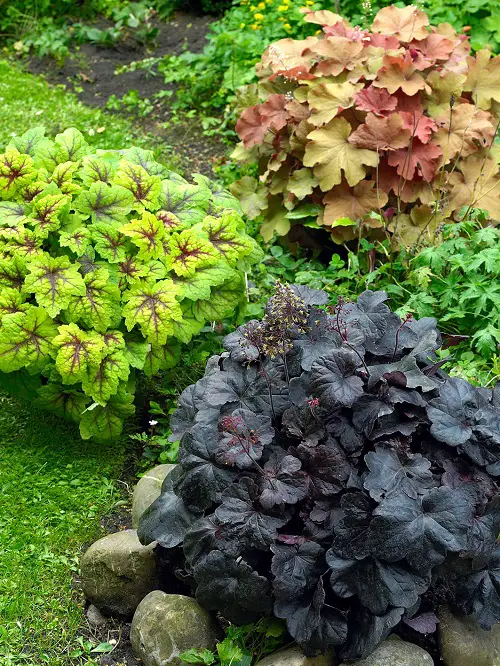
Botanical Name: Heuchera spp.
USDA Zones: 4-9
These hardy, low-growing perennials produce leaves in chartreuse, purple, red, bronze, green, and silver. They can grow up to 3 feet tall and have colorful foliage that can be splotched or veined in contrasting colors. Don’t skip out on the companions!
4. Smoke Tree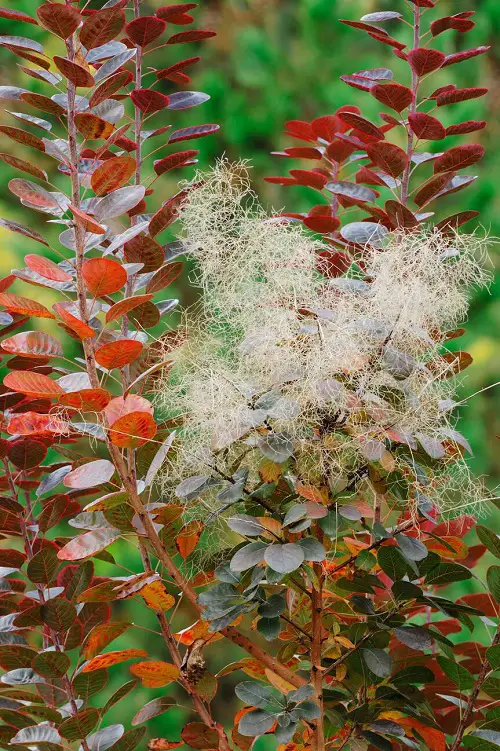
Botanical Name: Cotinus coggygria
USDA Zones: 4-8
You can grow a smoke tree as a large shrub and enjoy its oval leaves in shades of rich purple or gold throughout the gardening season. Some of its varieties also come with lime green leaves that turn deep, rich red and orange in autumn.
5. Blue Fescue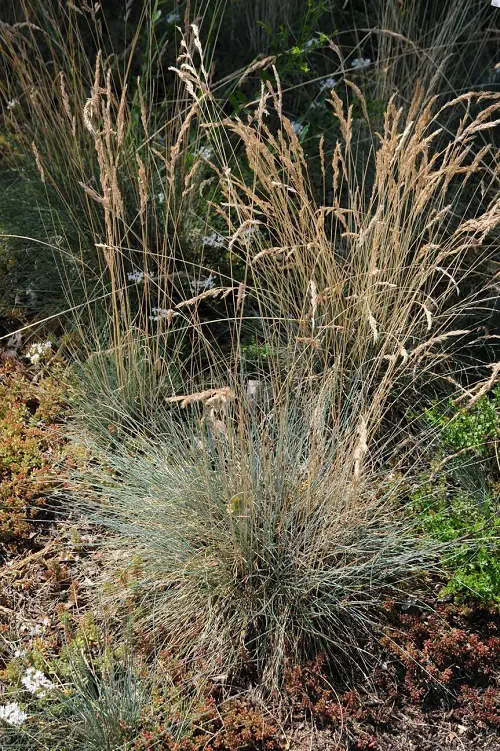
Botanical Name: Festuca glauca
USDA Zones: 4-8
It is an ornamental grass that forms tidy mounds of blue leaves, which is why it is named so. You will see its most vivid blue color in spring and fall. In the summer, however, this grass turns a darker shade of blue-green.
6. Caladium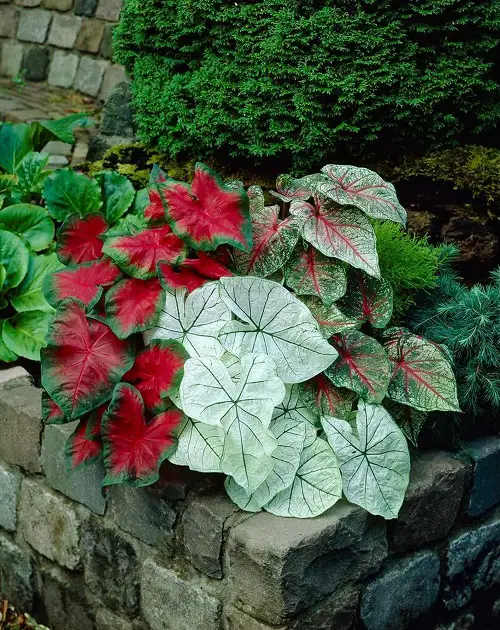
Botanical Name: Caladium spp.
USDA Zones: 9-11
Caladium’s bold, tropical foliage looks stunning in summer. These cultivars can be grown in full sun to full shade (depending on the variety) in well-drained, evenly moist soil. Plus, they make stunning indoor displays!
7. Canna
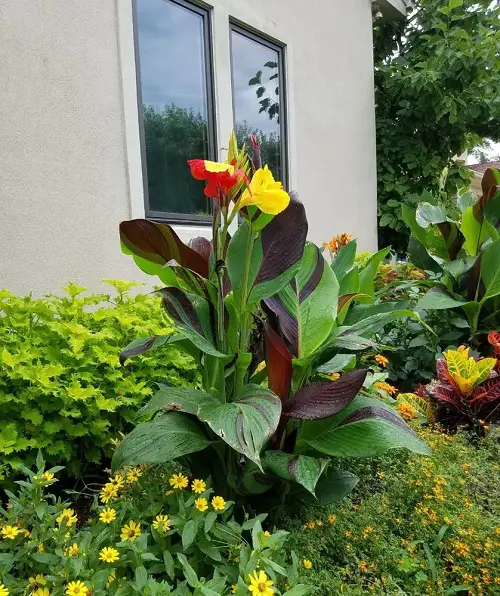
Botanical Name: Canna indica
USDA Zones: 8-11
These tropical plants are available in green, bronze, and black, with variegated or striped foliage. Cannas also develop red, pink, orange, or yellow flowers, which is an add-on. You can grow them from rhizomes planted directly in the garden in spring. Do check out these canna varieties before choosing one!
8. Ninebark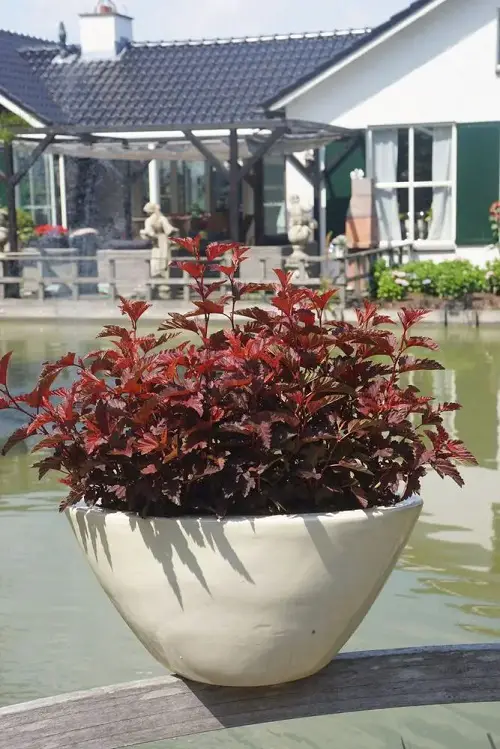
Botanical Name: Physocarpus spp.
USDA Zones: 2-8
The Ninebark is a fascinating shrub with its dark purple foliage that adds lovely aesthetics to your garden. It is a blessing for newbie gardeners as it is an easy-care plant that stands despite heat, drought, and winter cold.
9. Tiger Eye Sumac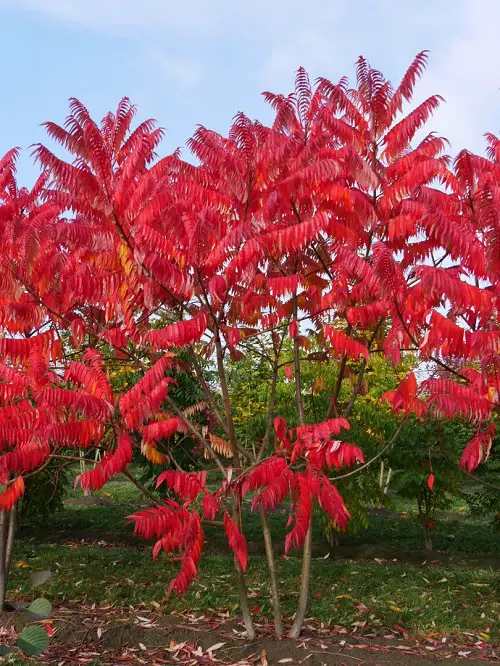
Botanical Name: Rhus typhina
USDA Zones: 3-8
Tiger eyes sumac plants develop chartreuse foliage that gradually turns bright yellow as it matures. One of the unique characteristics of this cultivar is that its rosy pink stems continue to add color year-round, even after dropping their leaves for the winter.
10. Sweet Potato Vine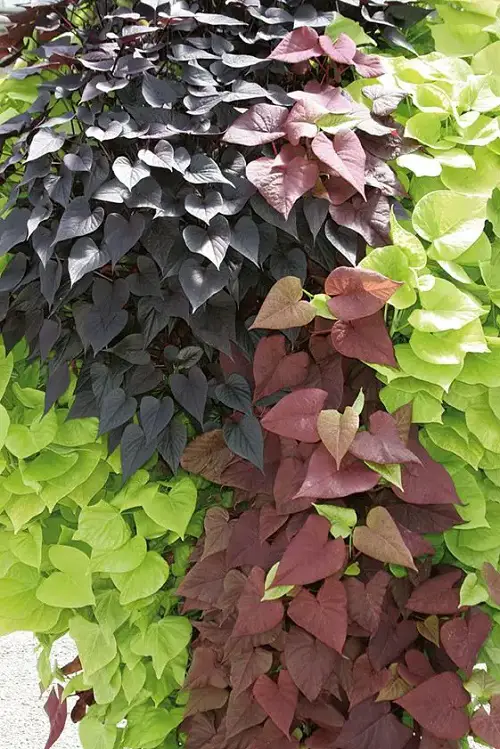
Botanical Name: Ipomoea batatas
USDA Zones: 9-11
Grown as a perennial in warmer climates, Sweet Potato varieties like ‘Marguerite’ have beautiful chartreuse leaves, while others have bronze or dark purple foliage. This plant needs full sun to partial shade, so make sure you keep the soil consistently moist.
11. Yucca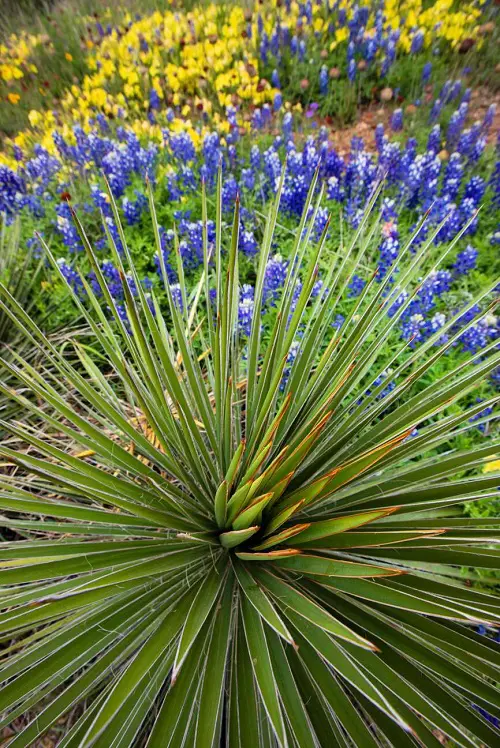
Botanical Name: Yucca spp.
USDA Zones: 4-11
Many yucca varieties offer yellow or white variegation, making them stand out in your landscape. They grow best in dry soils and require little watering, a perfect feature for busy gardeners.
12. Japanese Maple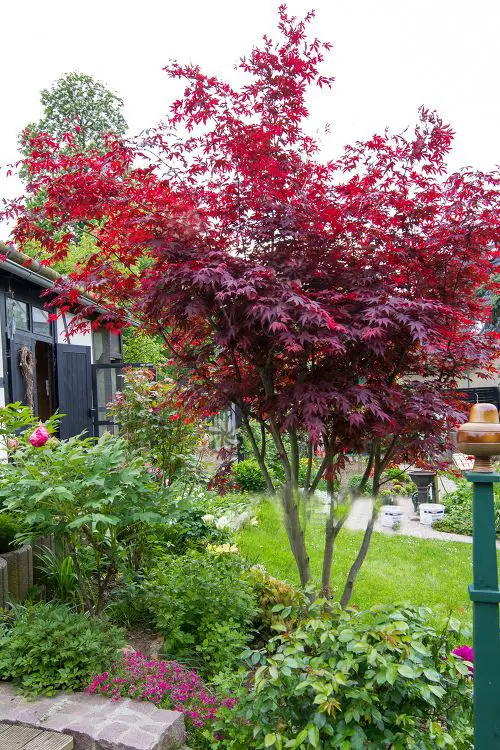
Botanical Name: Acer palmatum
USDA Zones: 5-9
This one comes in various colors and leaf shapes, with some offering brilliant year-round shades of purple and red. You will notice that some Japanese maples take on their most intense hues in the fall. You can easily grow them as small trees or multi-stemmed shrubs.
13. Tampala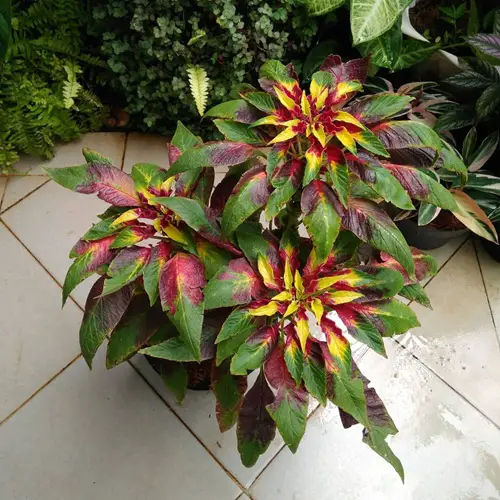
Botanical Name: Amaranthus tricolor
USDA Zones: 2-11
You might also see this plant growing flowers, but its foliage is the center of attraction. Its yellow, red, and orange colors make it a colorful choice for beds or containers. This short-lived perennial loves the sun, so ensure you give it as much sun as possible.
14. Begonia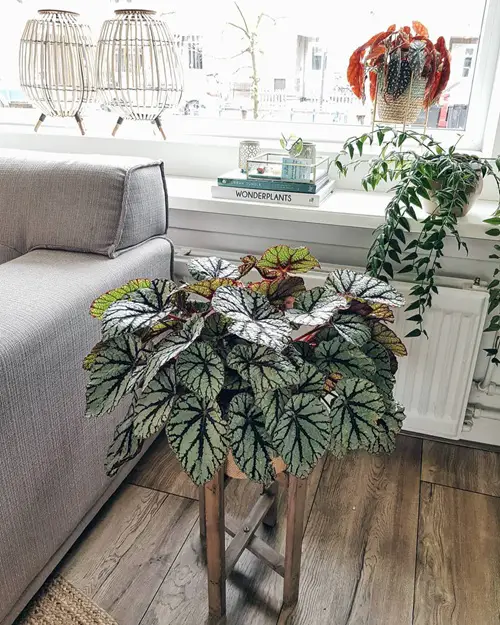
Botanical Name: Begonia rex
USDA Zones: 9-11
When discussing colorful foliage, the list is incomplete without the lovely Begonia. As an indoor gardener, you might have come across Begonia rex, a category of begonias with colorful foliage. These come in various colors, from dusty greens to purples and deep reds.
15. Croton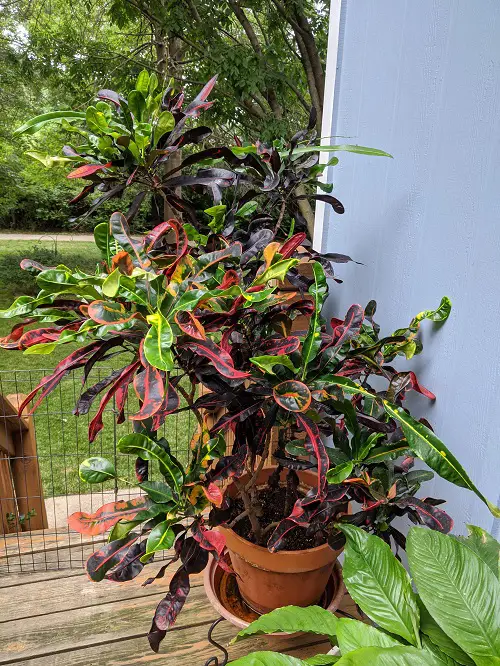
Botanical Name: Codiaeum variegatum
USDA Zones: 10-11
Here’s another lovely, colorful foliage perennial that’s a common houseplant around the globe. Codiaeum variegatum is one of six species of broadleaf evergreen perennials and shrubs with various leaf colors and patterns. Here are tall varieties that stand out!
16. Dusty Miller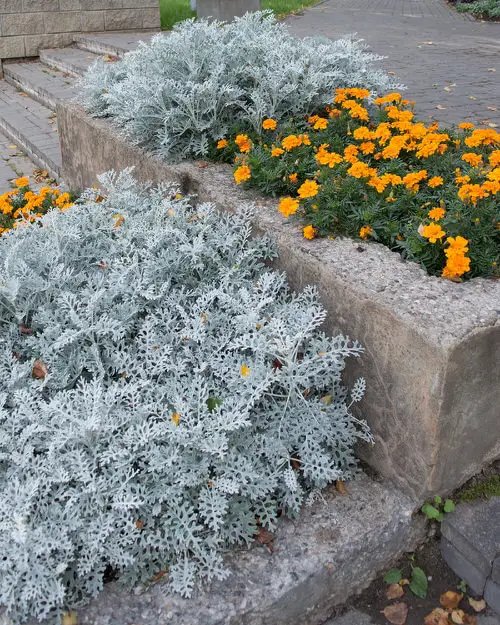
Botanical Name: Centaurea cineraria
USDA Zones: 7-10
Dusty Miller is a tender perennial with bright silvery-white color that stands out among other cultivars. Being of Mediterranean origin, dusty miller is heat and drought-tolerant and does best in full sun. It’s a great pick for landscaping!
17. Chinese Fringe Flower 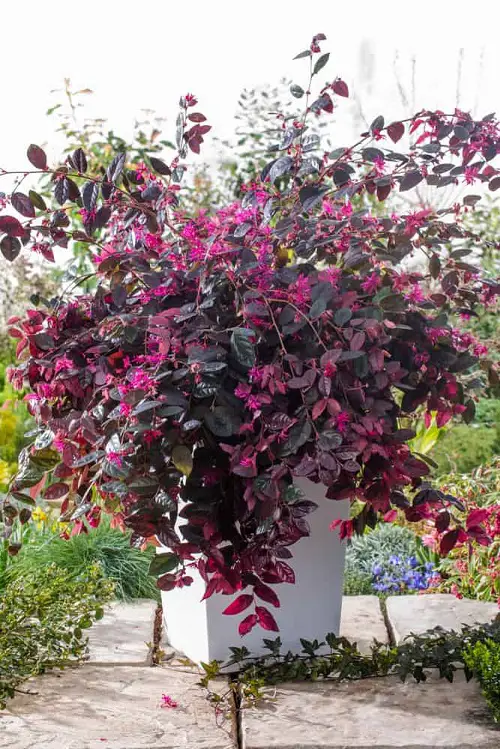
Botanical Name: Loropetalum chinense
USDA Zones: 7-9
The Chinese fringe flower is a broad-leaved evergreen or semi-evergreen shrub with red hues in the foliage. It thrives in a bright, sunny location that receives partial shade throughout the day.
18. Heartleaf Bergenia
Botanical Name: Bergenia cordifolia
USDA Zones: 3-8
It features large, glossy green leaves on a low-growing plant. Heartleaf bergenia’s clusters of attractive flowers appear early in the spring, providing an interesting texture for the garden. These plants remain semi-evergreen over winter and may also turn bronze.
19. Japanese Forest Grass 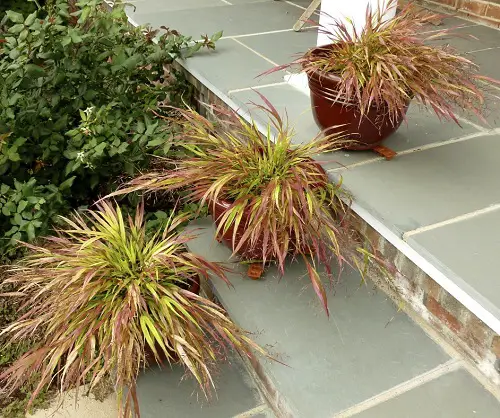
Botanical Name: Hakonechloa macra
USDA Zones: 5-9
This grass has yellow-gold foliage in partial or dappled shade, but it will also grow in full shade, where the color fades to red hues or lime green. It thrives in cool, moist conditions, but if you water it regularly and mulch its roots to keep them cool, it can do well in warmer areas.
20. Foam Flower
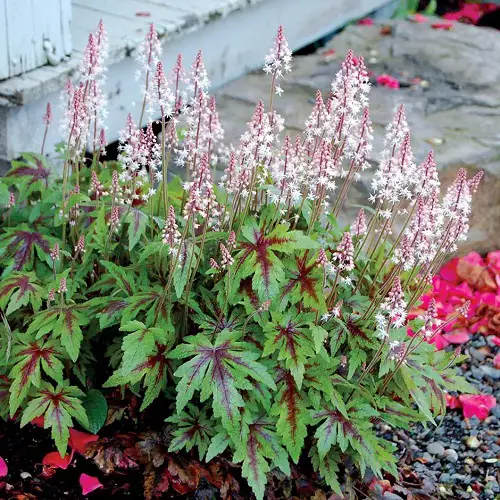 Botanical Name: Tiarella wherryi
Botanical Name: Tiarella wherryi
USDA Zones: 5-7
Foamflower thrives in part to full shade and humus-rich soil that stays consistently moist, but not wet. Its leaves are semi-evergreen with maroon highlights. The foliage also has red or purple veins and scattered glandular hairs, which makes it look unique.
21. Polka Dot Plant
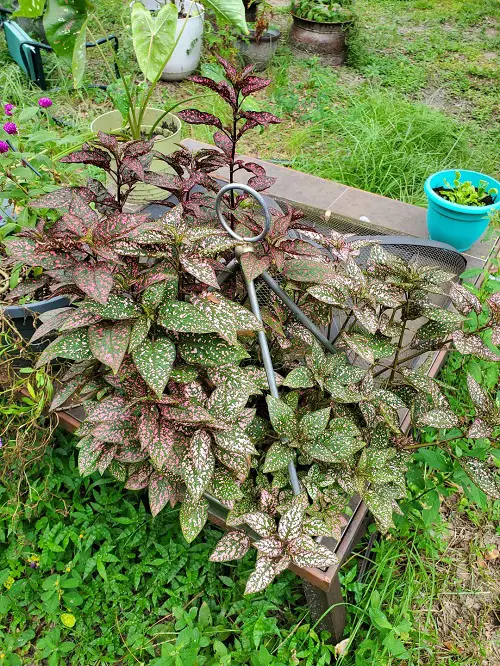
Botanical Name: Hypoestes phyllostachya
USDA Zones: 10-11
The polka dot plant is a low-growing perennial known for its brightly speckled leaves, which come in shades of pink, red, or white against green backgrounds. It thrives in partial shade to bright indirect light, making it a great choice for both garden beds and indoor containers. Here’s how to grow it!
22. Lungwort

Botanical Name: Pulmonaria spp.
USDA Zones: 5-9
It is a charming shade-loving colorful perennial loved for its unique silver-spotted or mottled foliage. These might not be the most colorful on the list, but its early spring blooms in shades of blue, pink, or violet make it a standout.
Most of these plants are also low-maintenance and come back every year, saving you time and effort. So pick a few that grow well in your zone, and enjoy their beauty season after season.


